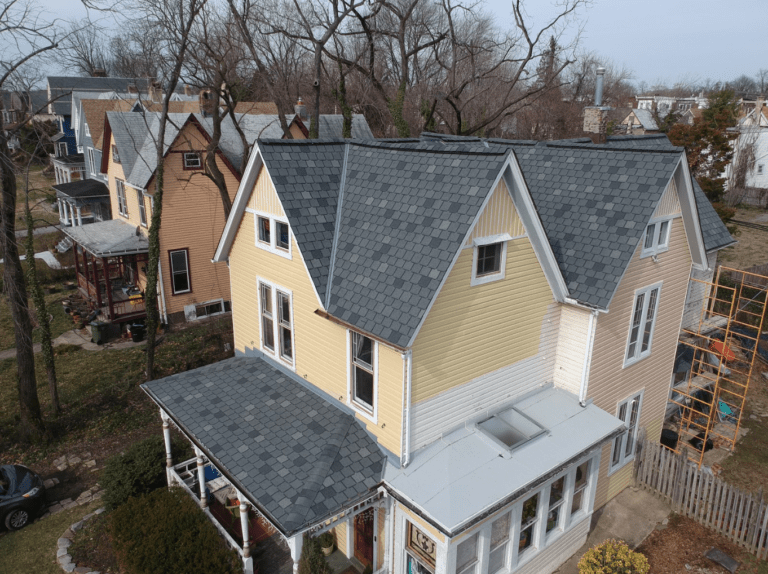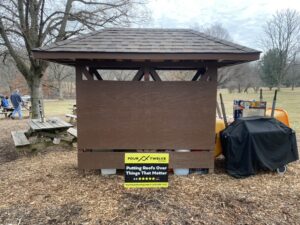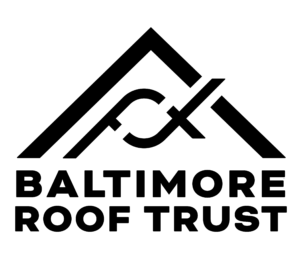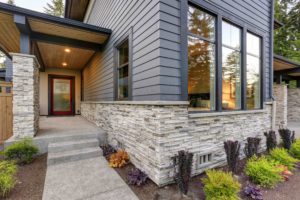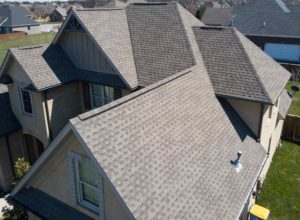When you schedule an estimate for a roof replacement in Maryland, your estimator may be throwing a lot of terminology at you about the roof. When they talk about damaged eaves, or replacing the underlayment, you may feel like they’re speaking a different language. To ensure that the estimation process feels transparent and effective, it’s important for you to be brought up to speed on the language roofers use to discuss your MD roof replacement.
Types of Roofs
Before we break down the individual terms for your roof, let’s first look at the different structures that make up roofs, and specific materials that go along with these structures.
Gable Roof:
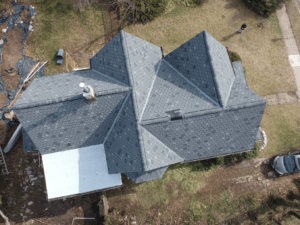
Sometimes called a peaked or pitched roof, gable roofs are defined by steep surfaces that meet in a triangular shape. They’re one of the most common types of roofs in suburban areas across the country. The A-shape prominent on the roof can help divert snow, rain, and debris from the roof thanks to its steep surface.
Hip Roof:
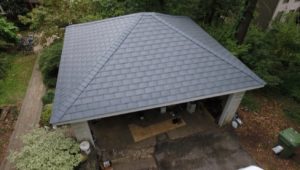
A hip roof has slopes of equal lengths on all four sides, meeting in the middle of the roof. Hip roofs are sturdier than gable roofs, and are especially popular in areas that suffer from high wind or high snowfall.
Flat Roof:
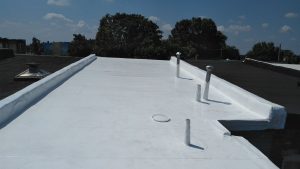
It seems that many roofing companies forget about flat roofs, but as a Baltimore-born and bred business, we are very familiar with flat roof systems. Flat roofs are common on classic Baltimore rowhomes, and utilize their own specific roofing technologies to protect your home. This is a very common candidate for roof replacement in Maryland.
Roofing Materials:
Different types of roofing materials have their own draws, from function to cost to aesthetic appearance. Here are the most common roofing materials we work with.
Shingles:
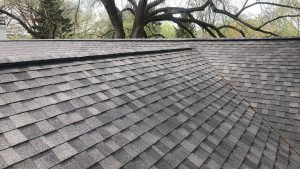
Shingles are one of the most common roofing materials used in MD roof replacements. Shingles are typically made from composite materials like asphalt and fiberglass. They help protect the structural elements of your roof from the elements.
Slate:
Slate roofs are roofing systems made from stone slaps. They’re similar in appearance to shingle roofs, but some homeowners prefer the smooth aesthetic offered by slate.
Synthetic Slate:
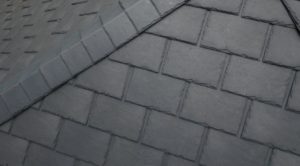
Synthetic slate is a cost-effective alternative to traditional slate roofing. Synthetic slates are also more eco-friendly, while still maintaining the attractive aesthetic of traditional slate.
Metal:
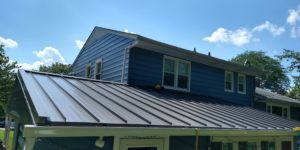
Metal roofing in Maryland has grown in popularity, especially for modern home designs. They come in two options, standing seam, and exposed fastener. Standing seam is more secured and waterproofed than exposed fastener, but more expensive of the two options.
Modified Bitumen:
Modified bitumen, or ModBit as the roofers refer to it, a type of flat roofing. ModBit is a high-density fiberboard cover board, base sheet, and asphalt cap sheet. It is white in color.
TPO
White in color, TPO is another flat roofing option. Single-ply membranes are glued to the roof deck overtop of the insulation board with heat-welded seams. It is commonly used in multifamily and commercial installations or in instances where the roof is “walkable.”
EPDM
EPDM is also commonly used in multifamily and commercial projects, but it is black in color. The single-ply membranes are glued to the roof deck over top of the insulation board with taped seams.
DecTec
This option comes a in a standard color package, and features an upgraded cool-step technology package. You’ll most commonly find DecTec used for walkout roof decks and condo buildings.
Silicone Coatings
Silicone coatings are utilized to increase the lifespan of your flat roof, helping seal cracks and increase the strength and structural durability of the roof over a longer period of time.
The Pieces of Each Roof
Here are some of the individual pieces that go into your roof replacement in Maryland.
Decking: Sometimes called sheathing, decking refers to pieces of plywood that run the length of the roof over the rafters to add extra support to the layers of underlayment and exterior roofing materials above.
Eaves: Eaves are the edge of a roofing system that typically extend a little bit over the house.
Fascia: Fascia boards are found underneath the chosen roofing material (shingles, slate, etc.) and used an extra layer to keep moisture from entering into the roofing system. They are also commonly the piece of material that your gutter system is attached to.
Flashing: Flashing refers to strips of metal used across your roofing system to seal areas at greater risk of moisture entry. They come in several varieties. Base flashing is used around the base of your roof. Cap flashing is utilized to seal off the areas around chimneys or walls. Drip edge flashing can be found at the edge, where the gutters meet the roof. And lastly, valley flashing is common for roofs with steep valleys.
Underlayment: This refers to a layer of “roofers felt,” that is attached to the deck board. While underlayment used to consist of felt paper, it now is commonly replaced with a thicker synthetic alternative. Underlayment helps provide another barrier for moisture protection.
Valleys: These are the bottom sections where inclines on your roof meet flatter areas. Valleys are known for being one of the places most susceptible to water entry, as the water flows down the inclined surfaces and converges in the valley.
Vents: Your roof utilizes several different ventilation systems. For instance, pipe vents that protrude from the roof, are actually utilized to move wastewater into the sewer via pressure in the pipe. Ridge vents can be found at your roof’s apex, and allow how air to escape from your attic area. Soffit vents also help with air in your attic, but are located at a lower point of the roof, on the underside of your eaves.
There you have it. The must-know terms that will help you get the most out of any estimation for a roof replacement in Maryland. The estimation is only one step of the process, and it won’t do you much good if you’re not working with a qualified roofing company. At Four Twelve Roofing, our almost 300 five-star reviews from clients on Google say more about us than we ever could. If you’re ready to get started on your MD roof replacement, look no further than Four Twelve

